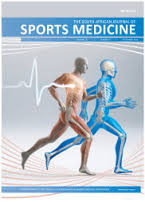Changes in cardiorespiratory fitness and cardiovascular health in the workplace: a case study
DOI:
https://doi.org/10.17159/2078-516X/2020/v32i1a7638Abstract
Background: Cardiorespiratory fitness (CRF) is an independent predictor of cardiovascular (CV) and all-cause mortality, contributing a higher proportion of CV risk compared to other traditionally recognised risk factors. However, CRF is not included in usual workplace wellness protocols and, as such, employers are not aware of the importance of this factor.
Aim: The aim of this case study was to explore the effect of a 12-week exercise intervention programme on CRF, CV health and medical health claims in a male participant who was employed by a corporate company with existing chronic diseases.
Findings: Health outcome measures improved after the 12-week exercise intervention programme. CRF showed the greatest improvement and medical health claims were lowered during the three-month post-intervention period.
Implications: CRF should be included as a health outcome measure in worksite wellness programmes and monitored.
Downloads
Downloads
Published
Issue
Section
License
The South African Journal of Sports Medicine reserves copyright of the material published. The work is licensed under a Creative Commons Attribution 4.0 (CC BY 4.0) International License. Material submitted for publication in the South African Journal of Sports Medicine is accepted provided it has not been published elsewhere. The South African Journal of Sports Medicine does not hold itself responsible for statements made by the authors.
How to Cite
- Abstract 718
- PDF 625






.png)